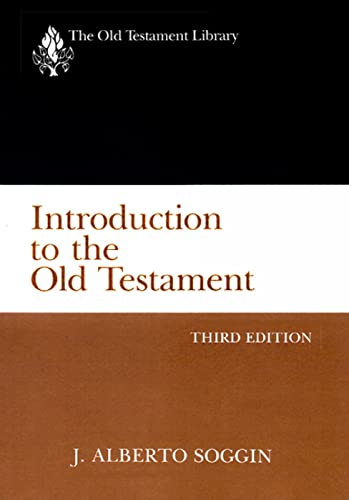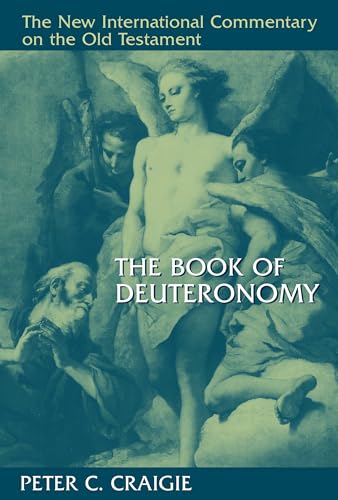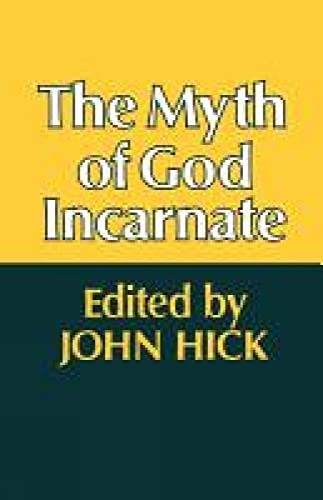Volume 3 - Issue 2
A bibliographical guide to the study of the Reformation: Part 2: Development
By A. Skevington WoodThe first part of this survey covered the beginnings of the reform movement in Germany and Switzerland. Part II traces the spread of Protestantism and also deals with the Radical Reformation. Readers should consult the first three sections of Part I for an indication of source material, reference works and general histories bearing on the entire period. As before, the catalogue is confined in the main to fairly recent books in English. The place of publication is London if no other is mentioned.
I. The spread of Protestantism
a. England
For over-all background, the student should resort to the classic account by S. T. Bindoff in Tudor England(Harmondsworth: Penguin, 1950). G. R. Elton, England under the Tudors (Methuen, 1955), now reprinted with an updated bibliography, has been described as brilliant and breathtaking. A concise selection of sources is found in the appropriate section of Documents illustrative of English church history, ed. H. Gee and W. J. Hardy (Macmillan, 1896). Volume XXVI in the Library of Christian Classics contains extracts from the writings of English reformers, ed. T. H. L. Parker (SCM, 1966).
For a bird’s eye view, T. M. Parker, The English Reformation to 1558 (OUP, 1950) in the Home University Library series, is admirable. For fuller measure it would be difficult to improve on A. G. Dickens, The English Reformation (Collins Fontana, 1967): it is comprehensive, reliable and invigoratingly fresh in its approach. An even more detailed treatment from a Roman Catholic historian is offered in P. Hughes, The Reformation in England, 3 vols. (Hollis and Carter, 1950–54). F. M. Powicke’s The Reformation in England (OUP, 1941) is a memorable essay.
The essential unity of the various elements involved is stressed in C. H. and K. George, The Protestant mind of the English Reformation (OUP, 1961). F. J. Smithen, Continental Protestantism and the English Reformation (Clarke, 1927) should be balanced by a consideration of A. G. Dickens, Lollards and Protestants in the diocese of York 1509–1558 (OUP, 1959), which produces evidence from the archives that the English Reformation is to be regarded as ‘a diffused but inveterate Lollardy revivified by contact with Continental Protestantism’. J. A. F. Thomson, The later Lollards 1414–1520 (OUP, 1965) underlines the same argument. H. C. Porter, Reformation and reaction in Tudor Cambridge (CUP, 1958), based on original material relating to the colleges, concludes that the Genevan exile exercised no unusual influence.
Not to be missed on any account is E. G. Rupp, Studies in the making of the English Protestant tradition(CUP, 1949). Professor Rupp is one of the very few historians who might qualify as a contributor to Punch, such is the wittiness of his style. Less scintillating but of considerable value is W. A. Clebsch, England’s earliest Protestants (Yale University Press, 1964)—‘now obligatory reading on the theology of Tyndale and the other early leaders’, according to Professor Dickens. A useful summary is found in P. E. Hughes, The theology of the English Reformers (Hodder and Stoughton, 1965). C. W. Dugmore, The mass and the English Reformers (Macmillan, 1958) recognizes a link with patristic doctrine prior to the Fourth Lateran Council (1215) and refuses to interpret Cranmer as a Zwinglian tout court.
A masterly account of a complicated subject from one who regards Anglicanism as a genuine middle way is contained in F. E. Hutchinson, Cranmer and the English Reformation (Hodder and Stoughton, 1957), reprinted as a paperback in 1966. J. G. Ridley, Thomas Cranmer (Oxford: Clarendon, 1962) is an extensive study arising from a re-examination of contemporary sources. It is unimpressive in its doctrinal sections, however, and readers will prefer G. W. Bromiley, Thomas Cranmer, theologian (Lutterworth, 1956).
An often neglected figure is featured in A. G. Dickens, Thomas Cromwell and the English Reformation(EUP, 1959) in the Teach Yourself History series. C. H. Williams, William Tyndale (Nelson, 1969) provides both a biography and an assessment. The Courtenay Library of Reformation Classics includes The works of William Tyndale, ed. G. E. Duffield (Appleford: Sutton Courtenay Press, 1964). The founding father of Elizabethan Anglicanism is the subject of V. J. K. Brook, A life of Archbishop Parker (Oxford: Clarendon, 1962), while the same author’s Whitgift and the English Church (EUP, 1957) sets ‘the Canterbury Caiaphas’ of the Marprelate tracts in a kindlier light. In P. Collinson, The English Puritan movement (Cape, 1967), freshly researched material is effectively utilized to clarify old problems.
b. Scotland
John Knox’s notable History of the reformation of religion within the realm of Scotland, 2 vols., ed. W. C. Dickinson (Nelson, 1949) remains a principal source of information. The appendix includes the Scots Confession of Faith and the First Book of Discipline. Part III of J. H. S. Burleigh, A church history of Scotland(OUP, 1960) supplies a judicious introductory survey. A. M. Renwick, The story of the Scottish Reformation(IVP, 1960) pays special attention to the distinctive characteristics of reform in Scotland, without detaching it from the broader movement of the Spirit in the sixteenth century. A commendably objective presentation is available in G. Donaldson, The Scottish Reformation (CUP, 1960). In The works of John Knox, 6 vols., ed. D. Laing (Edinburgh: Bannatyne Club, 1846–64) the reformer speaks unambiguously for himself. Among the biographies, J. G. Ridley, John Knox (Oxford: Clarendon, 1968), while adopting a noticeably independent stance, is not entirely at home on the Scottish scene and lacks theological insight. G. MacGregor, The Thundering Scot: A Portrait of John Knox (Philadelphia: Westminster, 1957), as its title suggests, recaptures the formidable authority of the man before whom even a queen trembled, whereas W. S. Reid, Trumpeter of God: a biography of John Knox (New York: Scribners, 1974) does ample justice to the importance of the reformer for his own times and today. The Book of Common Order can be examined in The liturgy of John Knox, ed. T. Leishman (Glasgow: University Press, 1886), while W. D. Maxwell, John Knox’s Genevan service book 1556 (Edinburgh: Oliver and Boyd, 1931) comments on the form of worship used by the reformer when a minister of the English congregation of Marian exiles.
c. France
Those unfamiliar with the course of the Reformation in France may conveniently start with a helpful short outline in F. C Palm, Calvinism and the Religious Wars (New York: Holt, 1932). They may then proceed to C. G. Kelly, French Protestantism 1559–1562 (Baltimore: John Hopkins University, 1918) which gives prominence to social and economic forces, and J. W. Thompson, The Wars of Religion in France 1559–15762 (Fisher and Unwin, 1958). For a fascinating interaction, see J. H. M. Salmon, The French Religious Wars in English political thought (Oxford: Clarendon, 1959); the same scholar has edited a symposium dealing with a basic issue: The French Wars of Religion: how important were religious factors? (Boston: Heath, 1967). There is a valuable bibliographical excursus. The tradition of Calvinist theocracy is analysed in W. F. Church, Constitutional thought in sixteenth-century France (Cambridge, Mass.: Harvard University Press, 1941).
R. M. Kingdon, Geneva and the coming of the Wars of Religion in France 1555–1563 (Geneva: Droz, 1956) is based on the biographies of eighty-eight pastors, followed by the same writer’s Geneva and the consolidation of the French Protestant movement 1564–1572 (Geneva: Droz, 1967). O. Zoff, The Huguenots(Allen and Unwin, 1943) is a sympathetic and stimulating account by a Czech Roman Catholic. Significant political figures—both women—on either side of the confrontation have been researched by N. L. Roelker, Queen of Navarre: Jeanne d’Albert 1528–1572 (Cambridge, Mass.: Harvard University Press, 1968) and J. Héritier, Catherine de’Medici2 (Allen and Unwin, 1963).
d. Italy and Spain
Only a limited amount of material is available in English covering the progress of Protestantism in these countries which largely maintained their allegiance to Rome. A reliable summary, drawing on published sources, is G. K. Brown, Italy and the Reformation to 15502 (Oxford: Blackwell, 1971). Outstanding and authoritative is P. McNair, Peter Martyr in Italy: an anatomy of apostasy (Oxford: Clarendon, 1967), which lists the reformer’s works. For an exposition of the sacramental theology of Peter Martyr Vermigli, reference should be made to J. C. McLelland, The visible words of God (Edinburgh: Oliver and Boyd, 1957). Another important leader is presented in an older but competent study: C. Benrath, Bernardino Ochino of Siena: a contribution towards the history of the Reformation (Nisbet, 1876). F. C. Church, The Italian Reformers 1534–1564 (New York: Columbia University, 1932), derived from thorough archives research, shows more interest in politics than in theology.
A solid work from a previous generation provides an introduction to the Reformation in Spain: C. A. Wilkens, Spanish Protestants in the sixteenth century (Heinemann, 1897). J. E. Longhurst, Erasmus and the Spanish Inquisition: the case of Juan de Valdés (Albuquerque: University of New Mexico, 1950) paves the way for a comprehensive if somewhat cumbersome investigation in J. C. Nieto, Juan de Valdes and the Origins of the Spanish and Italian Reformation (Geneva: Droz, 1970).
e. Netherlands
Although obviously in need of updating in parts, J. L. Motley, The rise of the Dutch Republic, 3 vols. (Collins, 1901) is still valid if fulsome. P. C. A. Geyl, The revolt of the Netherlands 1555–16092 (Williams and Norgate, 1958), in a convincing interpretation, shows that religion was not necessarily the major reason for the upheaval. C. V Wedgwood, William the Silent (Cape, 1944) has justifiably established itself as a classic.
f. Scandinavia
E. H. Dunkley, The Reformation in Denmark (SPCK, 1948) effectively surveys the terrain and suggests further reading. The development of Norwegian Protestantism is described in the closing chapter of T. B. Willson, History of church and state in Norway from the tenth to the sixteenth century (Constable, 1903); there is an equivalent chapter on the Reformation in J. Wordsworth, The national church of Sweden (Mowbray, 1911). The latter may be supplemented by C. J. I. Bergen-dorf, Olavus Petri and the ecclesiastical transformation in Sweden 1521–1552 (Macmillan, 1928). The manual of Olavus Petri 1529, ed. E. E. Yelverton (SPCK, 1953) is a significant liturgical document, being the first vernacular service book of the Reformation.
g. Poland
A substantial treatment from the last century retains considerable value as an informative record: W. S. Krasinski, Historical sketch of the rise, progress and decline of the Reformation in Poland, 2 vols. (Murray, 1834–40). P. Fox, The Reformation in Poland2 (Baltimore: Johns Hopkins University, 1971) focuses on social and economic aspects.
II. The Radical Reformation
a. General
It is currently fashionable to distinguish the Magisterial Reformation of Luther, Calvin and Zwingli from the Radical Reformation representing a complex of movements often unified only by a common desire to carry ecclesiastical change to its utmost limits. E. A. Payne offers an excellent brief introduction in chapter 4 of The new Cambridge modern history, II, The Reformation 1520–1559, ed. G. R. Elton (CUP, 1958). Volume XXV in the Library of Christian Classics comprises a selection of documents related to the Radical Reformation in northern Europe under the title Spiritual and anabaptist writers, ed. G. H. Williams and A. M. Mergal (SCM, 1957). An indispensable and definitive monograph is G. H. Williams, The Radical Reformation3 (Weidenfeld and Nicolson, 1975), which claims that, so far from repudiating the Reformation, Radicals actually aimed to advance it. Rather more tendentious but nevertheless in its own way stimulating is L. Verduin, The Reformers and their stepchildren (Exeter: Paternoster, 1964) which examines eight of the abusive terms hurled at ‘the men of the second front’.
b. Enthusiasts
The two lengthier sections of E. G. Rupp, Patterns of Reformation (Epworth, 1969) deal with ‘Mr ABC’—Andreas Bodenstein von Carlstadt—and Thomas Münzer. On the latter, E. W. Gritsch, Reformer without a church (Philadelphia: Fortress, 1967) is the only full-scale biography in English and incorporates extensive excerpts from Münzer’s extant works. R. J. Sider, Andreas Bodenstein von Karlstadt: the development of his thought 1517–1525 (Leiden: Brill, 1974) is impressively comprehensive, presenting a modified interpretation. J. S. Preus, Carlstadt’s Ordinaciones and Luther’s Liberty: A Study of the Wittenberg Movement 1521–22 (OUP, 1974) takes a similar line, to such an extent that some scholars now think that the newly redressed balance itself needs to be redressed.
c. Anabaptists
Many of the otherwise disparate Radical groups were linked by their uniform opposition to the practice of infant baptism and their insistence on the re-baptism even of fellow Protestant believers. The proceedings of a recent Colloquium organized by the Faculty of Protestant Theology at Strasburg has now been published: The origins and characteristics of anabaptism, ed. M. Lienhard (The Hague: Nijhoff, 1977). C.-P. Clasen, Anabaptism: a social history 1525–1618 (Cornell University, 1972) covers Switzerland, Austria, Moravia and southern and central Germany, tending to play down the strength and influence of the movement. F. H. Littell, The origins of sectarian Protestantism (Macmillan, 1964) is a perceptive enquiry into the anabaptist view of the church, while J. S. Oyer, Lutheran Reformers against anabaptists (The Hague: Nijhoff, 1964) underlines the failure of Luther, Melanchthon and Menius properly to appreciate the theological convictions of those who were too easily dismissed as heretical dissidents. Hubmaier, Hut, Hofmann and Marpeck are closely scrutinized in R. S. Armour, Anabaptist baptism (Scottdale: Herald, 1966). An authoritative biography of the anabaptist leader in Zurich, with a selection from his writings, is presented by H. S. Bender, Conrad Grebel c. 1498–1526 (Goshen: Mennonite Historical Society, 1950).
C.-P. Clasen omitted the Dutch anabaptists from his survey mentioned above since he regarded the source material as too inaccessible. Others, however, have attempted the task from a somewhat different angle. W. E. Keeney, The development of Dutch anabaptist thought and practice 1539–1564 (Nieuwkoop: de Graaf, 1968) finds common ground, despite obvious differences, between the lay theology of Menno Simons and Dirk Philips and that of the mainline reformers, while C. Krahn, Dutch anabaptism: origin, spread, life and thought 1450–1600 (The Hague: Nijhoff, 1968) concludes that the Reformation in Holland between 1520 and 1566 is virtually synonymous with anabaptism. Krahn covers the neglected area of the Northern Provinces: the South is treated by A. L. E. Verheyden, Anabaptism in Flanders (Scottdale: Herald, 1961).
d. Anabaptist Sects
The early Mennonites flourished mainly in the Netherlands and in north-east Germany. A major source is Menno Simons’s own reminiscences in his ‘Reply to Gellius Faber’. The complete writings of Menno Simons c. 1496–1561, ed. J. C. Wenger (Scottdale: Herald, 1956) makes full use of texts recovered only in comparatively recent times. Many invaluable articles are available in The Mennonite encyclopaedia, 4 vols., ed. H. S. Bender and C. H. Smith (Scottdale: Herald, 1955–59). The standard biography is J. Horsch, Menno Simons: his life, labour and teaching (Scottdale: Herald, 1916). The same author has written on The Mennonites in Europe3(Scottdale, Herald, 1950) and The Hutterian Brethren 1528–1931 (Goshen: Mennonite Historical Society, 1931). The Hutterites originated in Moravia before being driven by persecution into Slovakia and Transylvania. For various aspects of the sect, see Hutterite studies: essays by Robert Friedman, ed. H. S. Bender (Goshen: Mennonite Historical Society, 1961).
e. Spiritualists
According to G. H. Williams, there are three main groupings among the dissenters of the Radical Reformation: the anabaptists proper, the spiritualists, and the evangelical rationalists. The second of these is so called because of its stress on the leading of the Holy Spirit as the ultimate channel of divine authority. Despite some defects, the best introduction is still R. M. Jones, Spiritual Reformers in the sixteenth and seventeenth centuries (Macmillan, 1914). J. Wach, Types of religious experience, Christian and non-Christian (Routledge and Kegan Paul, 1951) devotes a chapter to the leading and neglected spiritualist Caspar Schwenckfeld, whom he regards as one of the most attractive figures of the Reformation. S. G. Schultz, Caspar Schwenckfeld von Ossig 1489–1561 (Norristown: Schwenckfelder Church, 1946), by an associate editor of the multi-volume Corpus Schwenckfeldianorum, presents him as an apostle of the middle way. A review of his theology is found in P. C. Maier, Caspar Schwenckfeld on the person and work of Christ (Assen: Van Gorcum, 1959). J. H. Seypell, Schwenckfeld, knight of faith (Pennsburg: Schwenckfelder Library, 1961) identifies the freedom of the will and eucharistic doctrine as primary issues in the reformer’s thought.
A. Skevington Wood
Principal of Cliff College Calver






